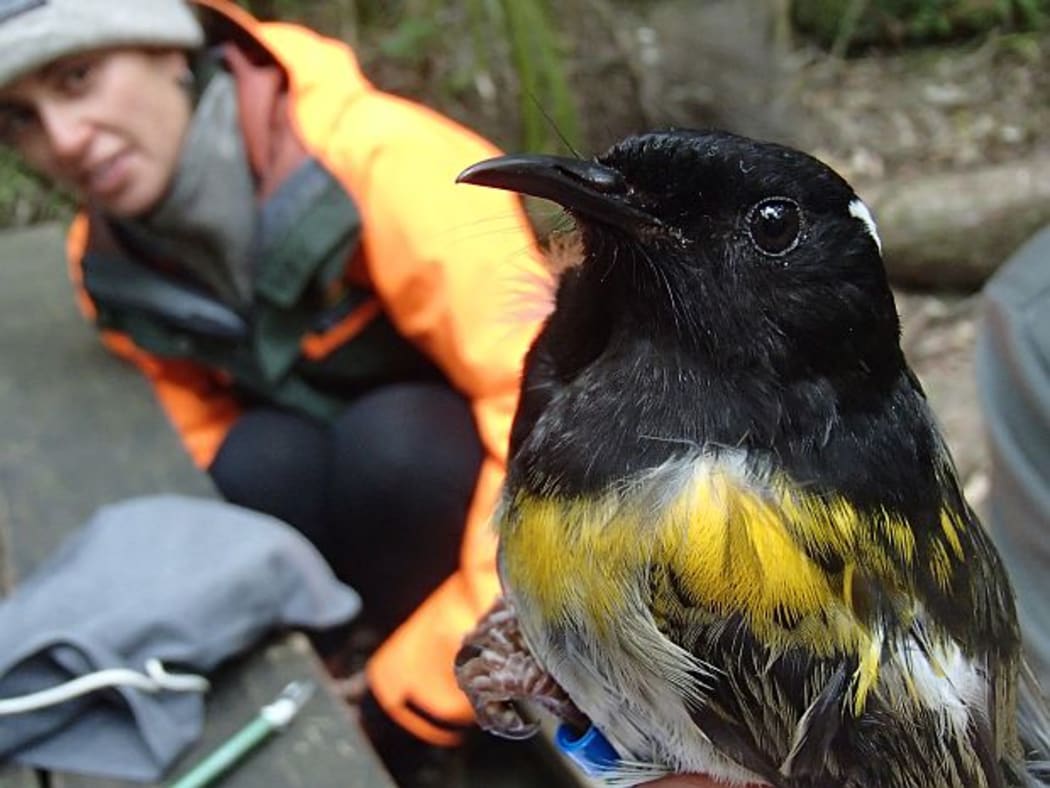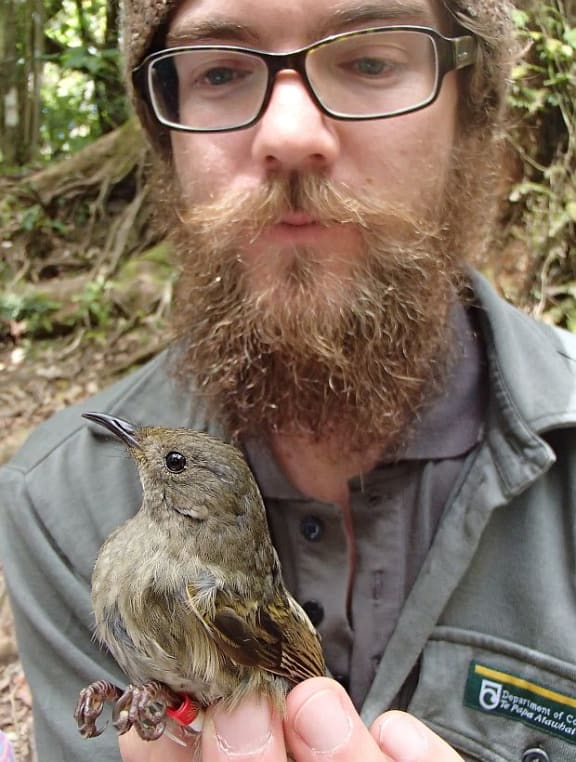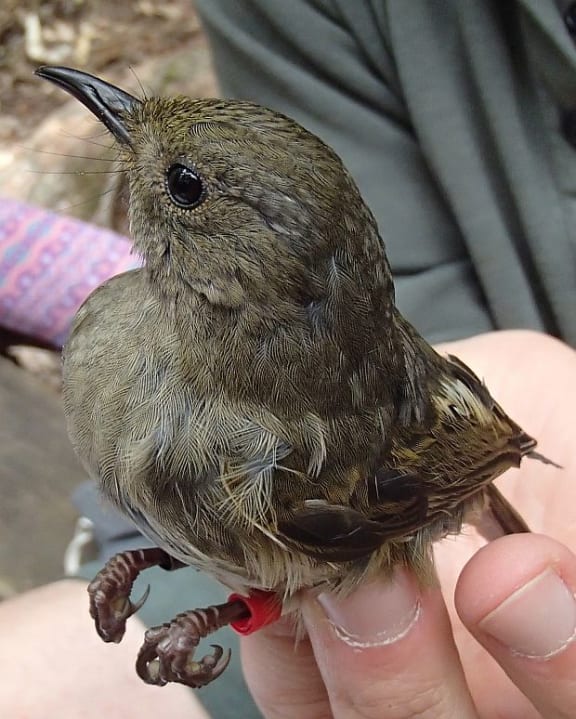By Alison Ballance

Male hihi are a striking black, yellow and grey in colour. The white eyebrow, that is just visible, is raised when the bird is being territorial. DoC ranger Alisha Sheriff looks on. Photo: RNZ / Alison Ballance
There are just over a hundred hihi on Kapiti Island – and between them they get through three-quarters of a tonne of raw sugar each year.
Hihi, or stitchbirds, are one of New Zealand’s rarest birds. They were introduced to Kapiti Island 30 years ago, from their only naturally occurring wild population on Hauturu-Little Barrier Island in the Hauraki Gulf. Hihi were formerly widespread through the North Island and on larger northern islands, but introduced predators and habitat change saw them become almost extinct.
Hihi are 'honeyeaters', in that they eat nectar – but they are not closely related to tui and bellbird. In 2007, genetic analysis showed they were more closely related to the kokako family than to true honeyeaters, and they were assigned their own new passerine family, the Notiomystidae.

Ranger Nick Fisentzidis is responsible for the sugar water supplementary feeding programme, and for banding and monitoring the hihi population on Kapiti Island. Photo: RNZ / Alison Ballance
Hihi are fed sugar water to supplement their wild diet, as otherwise they struggle to breed at the five sites where they have been translocated. This is probably because the forest at these sites is either recovering from previous modification or is largely replanted, and the quality of food may therefore not be high enough. The original Hauturu population is not supplementary fed and is thriving in the island’s unmodified forests.
Department of Conservation ranger Nick Fisentzidis is responsible for the hihi supplementary programme on Kapiti Island, north of Wellington. It is a big job feeding the island’s hihi, and he says he can’t hope to cover the whole large island, so he operates a core network of feeders that he keeps well supplied with sugar water during the breeding season, as well as some outlying feeders that are topped up less regularly.
Bellbirds are also able to access the feeding stations, although the larger tui are excluded. Hygiene is critical as stitchbirds are very susceptible to disease.
Hihi are recognisable by their distinctive cocked tail. Females are brown, while the males have a striking black head and yellow chest band, and distinctive white eyebrows that they flick out when they are alarmed or acting territorially.
They make a sharp high-pitched call that is described as tzit tzit.
At the beginning of the 2014-15 summer breeding season the hihi population numbered 104 marked birds. Since then Nick has banded an additional 15 young birds from the 2013-14 breeding season that missed being banded last year.

Female hihi are brown, and much drabber than the males, although they have the same distinctive cocked tail. This young female has just been banded with a unique combination of coloured plastic leg bands. Photo: RNZ / Alison Ballance
Places to see Hihi
Hihi are now found in five sanctuaries, as well as on Hauturu-Little Barrier Island, which is not open to the general public.
Zealandia Sanctuary, Wellington – a fenced mainland island in central Wellington.
Kapiti Island – several operators run boat trips to the island (weather permitting), which is a nature reserve.
Bushy Park – a predator-free sanctuary near Whanganui
Maungatautari – a fenced sanctuary in the South Waikato.
Tiritiri Matangi Island – a predator-free open sanctuary in the Hauraki Gulf, accessible by a ferry that departs downtown Auckland and Whangaparaoa Peninsula daily.

